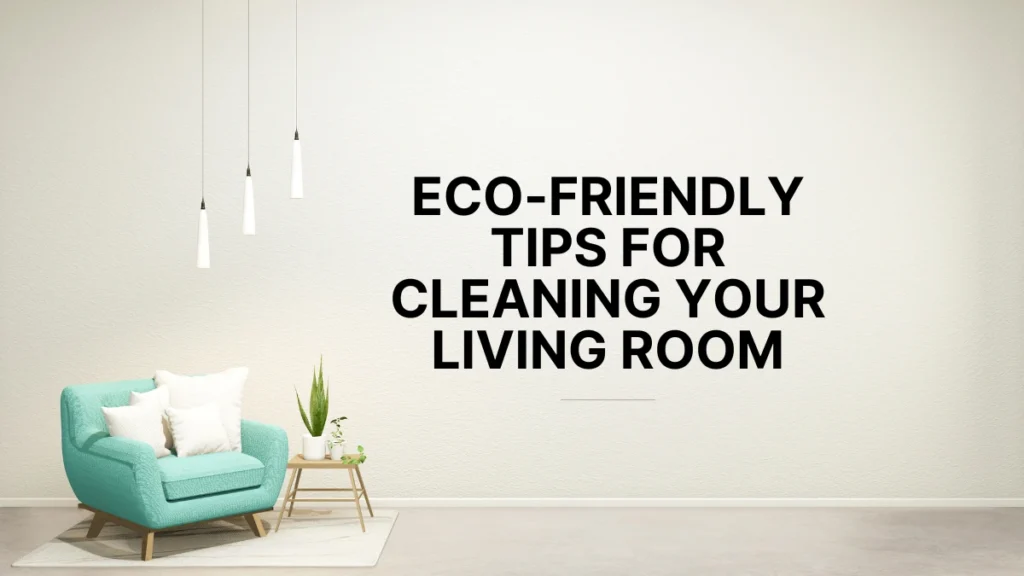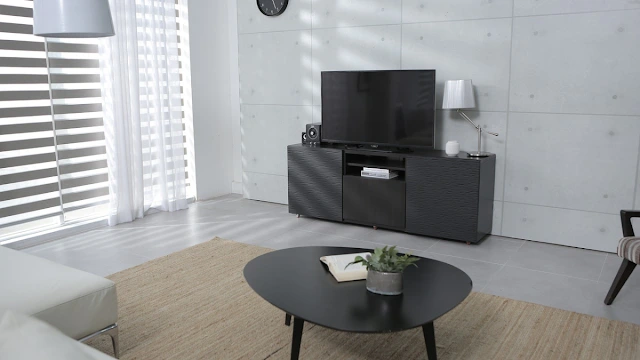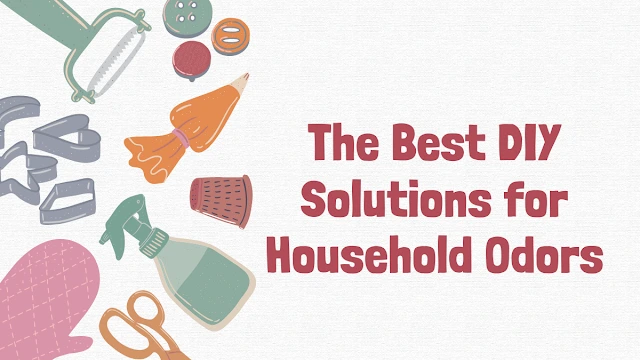
Introduction
Keeping your living room clean is essential for a healthy home environment. This space is often the center of family activities, gatherings, and relaxation. Regular cleaning ensures it remains a welcoming and comfortable place for everyone. But why not take it a step further and ensure your cleaning routine is also kind to the planet? By adopting eco-friendly cleaning practices, you can reduce your environmental impact and create a safer, healthier space for your family. These methods are not only effective but often more economical. Let’s explore some efficient, natural, and green tips for maintaining a spotless and eco-friendly living room.
Why Choose Eco-Friendly Cleaning?
Switching to eco-friendly cleaning methods has multiple benefits. Conventional cleaning products often contain harsh chemicals that can affect your health, causing issues such as skin irritation, respiratory problems, and allergies. In contrast, eco-friendly cleaners are typically made from natural ingredients like vinegar, baking soda, and essential oils, which are safe for your health and the environment.
Additionally, eco-friendly cleaning helps minimize the release of pollutants into the environment, protecting water sources and wildlife. Plus, using common household items for cleaning can save money compared to buying expensive commercial cleaners. Making this switch is a small but impactful step toward a healthier home and a cleaner planet.
The Importance of a Clean Living Room
The living room is often the heart of the home. It’s where you relax after a long day, entertain guests, and spend quality time with family and friends. A clean and organized living room promotes well-being, reduces stress, and creates a welcoming atmosphere. It also helps maintain the condition of your furniture and flooring, prolonging their lifespan.
However, cleanliness shouldn’t come at the cost of health or the environment. By using eco-friendly methods, you can keep this space clean and inviting while also ensuring that you’re not introducing harmful chemicals into your home. This holistic approach supports a healthier lifestyle for you and your loved ones.
Eco-Friendly Tips for Cleaning Your Living Room
Preparing for an Eco-Friendly Clean
A little preparation can make your cleaning routine more efficient and eco-friendly. Before you start scrubbing and dusting, it’s essential to set the stage for an effective clean. Organizing your tools and products ahead of time can save you from unnecessary trips back and forth. Having everything you need within reach also helps you stay focused and thorough in your cleaning efforts.
Declutter First
Before you start cleaning, take a few minutes to declutter the space. Remove any unnecessary items, such as magazines, toys, or clothes, that don’t belong in the living room. Clutter can make a room feel chaotic and makes cleaning more difficult. Once you’ve cleared away the clutter, you’ll have a clearer view of what needs to be cleaned, and it will be easier to reach every corner and surface. Decluttering also reduces the number of surfaces that can collect dust and allergens, contributing to a healthier living environment.
Use Reusable Cleaning Tools
Swap disposable wipes and paper towels for reusable cloths and microfiber towels. Microfiber cloths are particularly effective because they can trap dirt and dust more efficiently than regular cloths, without the need for chemical cleaners. They are versatile and can be used on various surfaces, from glass to wood. You can wash and reuse them multiple times, which reduces waste and saves money in the long run. Investing in a set of good-quality, reusable cleaning tools is a simple yet impactful way to reduce your household waste.
Make Your Own Cleaning Products
Many natural ingredients in your kitchen can double as effective cleaning agents. For example, mix equal parts of water and vinegar in a spray bottle for a multipurpose cleaner that can be used on countertops, windows, and more. Baking soda is excellent for scrubbing surfaces and removing tough stains. Adding a few drops of essential oils like lemon or tea tree not only adds a pleasant scent but also provides additional antibacterial properties. By making your own cleaners, you avoid the harmful chemicals found in many commercial products and save money.
Eco-Friendly Cleaning Techniques for Different Surfaces
Your living room likely has a variety of surfaces, each requiring a specific cleaning approach. Using the wrong cleaner can damage materials like wood or upholstery. Let’s look at how to clean these surfaces effectively using eco-friendly methods that protect both your home and the environment.
Cleaning Wooden Furniture Naturally
Wooden furniture adds warmth and style to your living room, but it needs the right care to maintain its beauty and durability. Dust regularly with a soft cloth to prevent build-up. For deeper cleaning and polishing, use a mixture of olive oil and lemon juice. This combination nourishes the wood, enhances its natural shine, and leaves a pleasant, natural scent. Apply the mixture with a soft cloth, and buff in the direction of the grain to avoid scratching. This simple solution not only cleans but also helps preserve the wood’s natural beauty without the need for harsh chemicals.
Caring for Upholstery
Upholstery can harbour dust, dirt, and allergens, especially if you have pets or young children. Regular vacuuming helps, but deeper cleaning is also necessary to keep your furniture fresh and clean. Always check the care labels on your upholstery before using any cleaning products.
Spot-Cleaning with Vinegar and Baking Soda
For spot cleaning, mix equal parts of vinegar and water in a spray bottle. Spray the solution onto the stain, then sprinkle some baking soda over the top. The baking soda will react with the vinegar, causing it to fizz and lift the stain from the fabric. Let it sit for a few minutes, then blot the area with a clean cloth. This method works well on most fabric types, but always test a small, inconspicuous area first to ensure there is no dis-coloration or damage.
Maintaining Your Floors
Your living room floor endures a lot of foot traffic, and keeping it clean is crucial for maintaining the room’s overall appearance and hygiene. Here’s how to clean different types of flooring effectively:
Hardwood Floors
For hardwood floors, avoid water-based cleaners as they can seep into the wood and cause damage over time. Instead, use a damp microfiber mop with a solution of vinegar and water. The vinegar helps to remove dirt and grime without harming the wood. After mopping, use a dry cloth to wipe away any excess moisture to prevent water damage. This method not only cleans but also leaves your hardwood floors with a beautiful, natural shine.
Carpeted Floors
Carpets can trap dust, pet dander, and allergens, which can contribute to indoor air pollution. Regular vacuuming is essential to remove surface dirt, but a deeper clean is sometimes necessary. Sprinkle baking soda over your carpet and let it sit for 15-20 minutes before vacuuming. This will help neutralize odors and refresh your carpet naturally. For tougher stains, you can use a mixture of vinegar and water or a natural carpet cleaner. Always blot the stain rather than rubbing to avoid spreading it further.
Tile and Stone Floors
Tile and stone floors are durable but require gentle care to maintain their appearance. Use a mixture of warm water and mild dish soap for routine cleaning. Avoid acidic cleaners like vinegar on stone floors, as they can damage the surface and strip the natural sealant. For grout, use a paste of baking soda and water, applied with an old toothbrush, to scrub away dirt and stains without harsh chemicals.
Green Solutions for Dust and Allergens
Keeping dust and allergens at bay is crucial for a clean and healthy living room, especially for those with allergies or asthma.
Dusting with Microfiber Cloths
Microfiber cloths are excellent for dusting because they trap particles rather than pushing them around. They can be used dry for light dusting or slightly dampened for more stubborn dust. Unlike traditional dusters, microfiber cloths can reach into small crevices and corners, making them perfect for dusting shelves, picture frames, and electronics. After use, you can simply wash and reuse them, reducing waste and ensuring that you always have a clean cloth on hand.
DIY Air Fresheners
Commercial air fresheners often contain harmful chemicals that can aggravate allergies and respiratory issues. You can make your own air fresheners at home with natural ingredients. One easy method is to simmer a pot of water with citrus peels, cinnamon sticks, and cloves. This will fill your home with a natural, pleasant aroma. Alternatively, mix water with a few drops of essential oils, such as lavender or eucalyptus, in a spray bottle for a quick, natural air freshener. These DIY options are safe, affordable, and customizable to your preferred scents.
Eco-Friendly Ways to Clean Electronics
Electronics can attract dust and fingerprints, and regular cleaning is necessary to keep them functioning well and looking good. However, harsh cleaners can damage sensitive components, so it’s important to use the right techniques.
Safe Cleaning for TV Screens and Monitors
TV screens and computer monitors are delicate and can be easily scratched. To clean them, use a soft, dry microfiber cloth. If needed, you can lightly dampen the cloth with distilled water to remove stubborn fingerprints and smudges. Avoid using alcohol or ammonia-based cleaners, as these can damage the screen’s anti-reflective coating. Always apply the liquid to the cloth, not directly to the screen, to prevent moisture from seeping into the device and causing damage.
Eco-Friendly Tips for Cleaning Remote Controls
Remote controls are often overlooked but can harbor a surprising amount of bacteria. Wipe them down regularly with a cloth slightly dampened with a mix of water and rubbing alcohol. This will disinfect the remote without damaging the plastic. Use a cotton swab dipped in the same solution to clean between the buttons.
This simple cleaning method keeps your remotes hygienic and helps reduce the spread of germs in your home.
Benefits of Eco-Friendly Cleaning
Eco-friendly cleaning is not just about protecting the environment; it also has numerous benefits for your home and well-being.
Healthier Indoor Air Quality
Many conventional cleaners release volatile organic compounds (VOCs) that can linger in the air and cause health problems, such as headaches, nausea, and respiratory issues. By using natural products like vinegar, baking soda, and essential oils, you minimize the presence of these harmful chemicals in your home. This helps to improve indoor air quality, making it safer to breathe, especially for children and pets who are more sensitive to pollutants.
Safe for Pets and Children
Pets and children are more susceptible to the harmful effects of toxic chemicals because they often come into closer contact with surfaces like floors and furniture. Eco-friendly cleaners, made from natural ingredients, are much safer and reduce the risk of accidental poisoning or skin irritation. You can clean with peace of mind, knowing that your home is safe for all family members.
Less Plastic Waste
Eco-friendly cleaning often involves using reusable items like cloths, mops, and containers, reducing the reliance on single-use plastics like disposable wipes and spray bottles. By making this simple switch, you significantly reduce your household’s plastic waste. This not only helps reduce pollution but also decreases the demand for new plastic products, contributing to a more sustainable lifestyle.
Reduced Water Pollution
Many commercial cleaners contain ingredients that are harmful to aquatic life, such as phosphates and synthetic fragrances. When these chemicals are washed down the drain, they can enter the water supply and disrupt ecosystems. By using natural, biodegradable cleaners, you reduce the amount of harmful substances entering the water, protecting aquatic life and the broader environment.
Conclusion
Adopting eco-friendly cleaning practices for your living room is a small change that can have a significant impact. Not only do you create a healthier space for you and your family, but you also contribute to a cleaner environment. These methods are easy to incorporate into your daily routine and are often more cost-effective than conventional products.
Start with simple changes like using natural cleaners and reusable cloths, and you’ll see that maintaining a green living room is both easy and rewarding. With a little effort, you can enjoy a clean, fresh living space that’s safe for both your family and the planet.
FAQs: Living Room Cleaning
Q: What are the best eco-friendly cleaning products for the living room?
Natural options like vinegar, baking soda, and essential oils are great for various cleaning tasks. They are non-toxic, biodegradable, and safe for most surfaces. Additionally, you can find eco-certified commercial products that meet strict environmental standards and are made without harmful chemicals.
Q: How can I make my own eco-friendly air freshener?
Mix water with a few drops of your favourite essential oil in a spray bottle. Alternatively, simmer water with citrus peels, cloves, and cinnamon sticks on the stove for a natural, long-lasting fragrance. You can also place bowls of baking soda or activated charcoal around the room to absorb unwanted odours.
Q: What is the best way to clean carpets without chemicals?
Sprinkle baking soda on the carpet, let it sit for 15-20 minutes, and then vacuum. This will help neutralize odours and refresh your carpet naturally. For tougher stains, use a mixture of water and vinegar or an eco-friendly carpet cleaner. Always blot stains rather than rub to avoid spreading them.
Q: How often should I clean my living room?
It’s good to dust and vacuum weekly, with a deeper clean once a month. Spot clean as needed to keep the space looking its best. Regular maintenance will make your deeper cleaning sessions more manageable and help maintain a healthier living environment.
Q: Can I use essential oils for cleaning?
Yes, essential oils like tea tree, lavender, and lemon are great for cleaning. They add a pleasant scent and have natural antibacterial properties. You can add a few drops to your homemade cleaners for added cleaning power and a refreshing aroma. However, always test a small area first to ensure there’s no adverse reaction with the surface you’re cleaning.
Important: The information provided here in the post is for general informational purposes only. It should not be taken as professional or any other type of advice. Always seek the advice of a qualified professional before implementing this information on your own. Thank you!
Add CleaningView To Your Google News Feed



